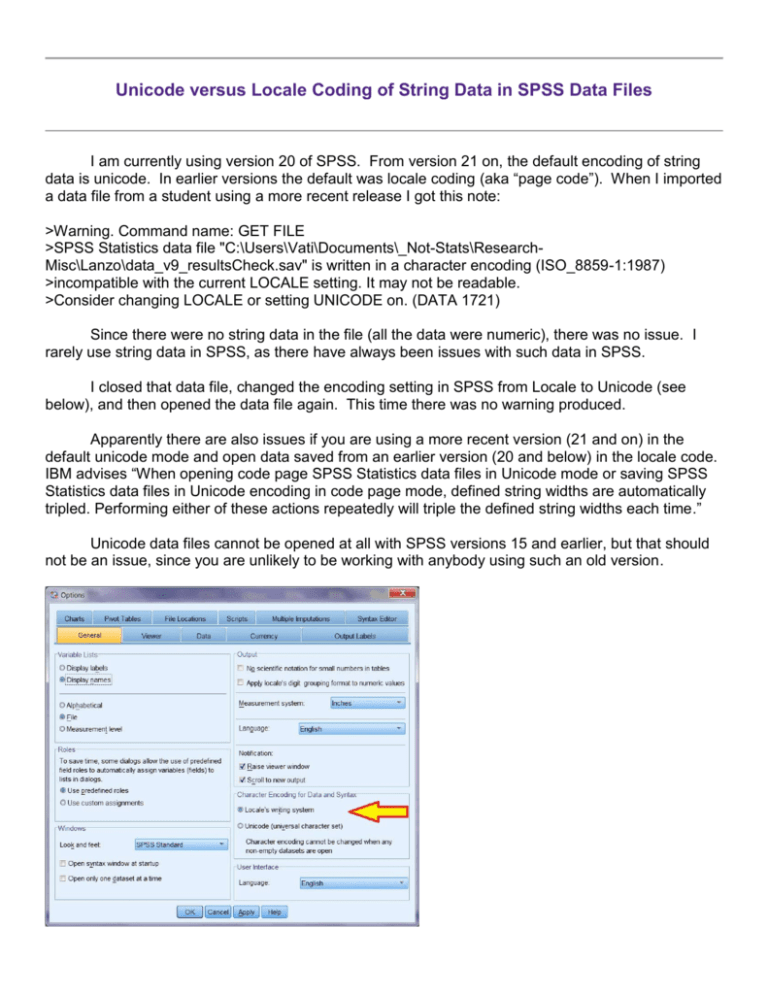

There's better ways to adjust charts than using the chart editor window. Only use the chart editor if everything else fails. This opens a chart editor window as shown below. You can open one by right clicking a chart as shown below. SPSS Output - Chartsįirst off, you can adjust basically anything about charts in the chart editor window. So those are the main basics regarding output tables. If I now rerun my frequency distributions, they'll look much nicer as shown below. On your computer, you may need a slightly different path. Set tlook 'C:\Program Files\IBM\SPSS\Statistics\24\Looks\Original.stt'.ĭoes the trick for me. The best way to fix this is setting a tablelook before running any tables. SPSS Table TemplatesĪnother thing I don't like about these tables is their styling: grey fonts with grey backgrounds. After doing so, all output tables we'll run will show only variable and value labels. Running this syntax is a much better option than using the aforementioned menu. It sets how values are shown in tables: values, labels or both. TNUMBERS is short for “table numbers”.It sets how variables are shown in tables: names, labels or both *Show only value labels and variable labels in output tables. A much better option for this than the crappy menu is just running the syntax below. This is because it creates very messy syntax. Oddly, the options dialog has no Paste button. However, I want to see only labels in the final tables that I'll report. The same goes for values and value labels because I want to know how my variables have been coded. When I'm inspecting my data, I want to see variable names and labels in my output. Variable and Value Labels in Output Tables And more importantly, there are faster options with which you can adjust many tables in one go. One reason is that you can't replicate and rerun whatever you do in the pivot table editor. Only use the pivot table editor if everything else fails. The pivot table editor window (shown below) allows us to adjust basically anything about our table. One option for doing so is right-clicking the table and selecting We'll usually want to make some adjustments to our output tables. The most important ones are tables and charts so we'll discuss those separately. So let's turn to the actual output items. You can also collapse and reorder output items in the outline but I don't find that too useful. A faster way for deleting a selection of output items is OUTPUT MODIFY. Use the ctrl key to select multiple items. In the output outline, you can also delete output items -SPSS often produces way more output than you ask for. the actual output items -mostly tables and charts- are often exported to WORD or Excel for reporting.the output outline is mostly used for navigating through your output items and.Running this syntax opens an output viewer window as shown below.Īs illustrated, the SPSS output viewer window always has 2 main panes:

frequencies educ marit jtype /barchart /order variable. SCALE: cat(aesthetic(), include("0", "1"))ĮLEMENT: line(position(INDEX*SUMMARY), color.interior(LaneChange_Auto_2), missing.wings())ĮLEMENT: interval(position((INDEX*(LOW+HIGH))), shape.interior(shape.ibeam), color.*Run frequency tables and bar charts on 3 variables. GUIDE: text.footnote(label("Error Bars: +/- 2 SE")) GUIDE: legend(aesthetic(), label("Critical Event 1: Automated Condition")) GUIDE: text.title( label( "Light Fog" ) ) GUIDE: form.line(position("2"), color(color.black)) TRANSFORM=VARSTOCASES(SUMMARY="#SUMMARY" INDEX="#INDEX" LOW="#LOW" HIGH="#HIGH")ĭATA: SUMMARY=col(source(s), name("#SUMMARY"))ĭATA: INDEX=col(source(s), name("#INDEX"), unit.category())ĭATA: LaneChange_Auto_2=col(source(s), name("LaneChange_Auto_2"), unit.category()) GRAPHDATASET NAME="graphdataset" VARIABLES=MEANSE(Auto_SDYaw_Sec1_E2, 2) MEANSE(Auto_SDYaw_Sec2_E2, 2) MEANSE(Auto_SDYaw_Sec3_E2, 2) MEANSE(Auto_SDYaw_Sec4_E2, 2) MEANSE(Auto_SDYaw_Sec5_E2, 2) MEANSE(Auto_SDYaw_Sec6_E2, 2) MEANSE(Auto_SDYaw_Sec7_E2, 2) MEANSE(Auto_SDYaw_Sec8_E2, 2) MEANSE(Auto_SDYaw_Sec9_E2, 2) LaneChange_Auto_2 MISSING=LISTWISE REPORTMISSING=NO
#VERTICAL LINE SPSS CODE CODE#
My whole code is as follows: * Chart Builder. However, changing 'position' to 2.5 doesn't work. I can draw a vertical line ON the variable by using this code: GUIDE: form.line(position("2"), color(color.black)) How do I plot a vertical line between the 2nd and 3rd variable/x-axis category? How do I rename the x-axis labels using syntax? Instead of having the variable names in each of the categories(eg: Auto_SDYaw_Sec1_E2), I wish to rename them to "Sec 1", "Sec 2", etc. In SPSS, using syntax I have drawn a line graph where the x-axis represents 9 different categories.


 0 kommentar(er)
0 kommentar(er)
